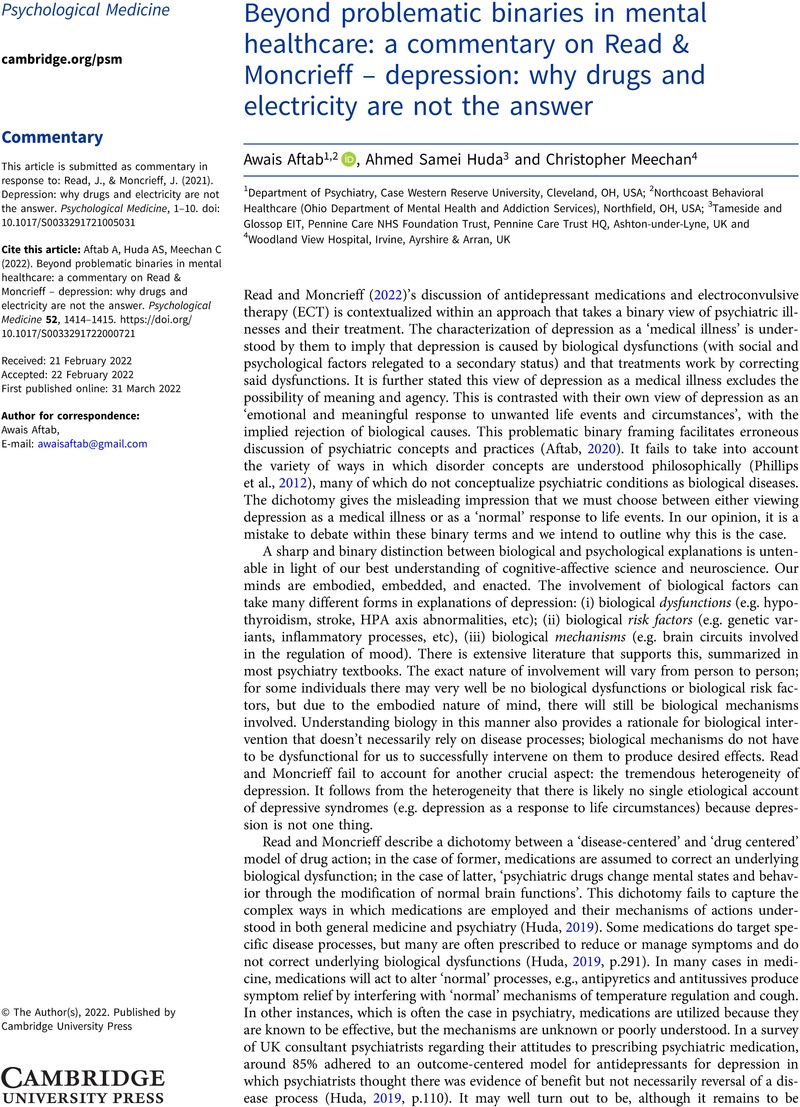No CrossRef data available.
Published online by Cambridge University Press: 31 March 2022

This article is submitted as commentary in response to: Read, J., & Moncrieff, J. (2021). Depression: why drugs and electricity are not the answer. Psychological Medicine, 1–10. doi: 10.1017/S0033291721005031